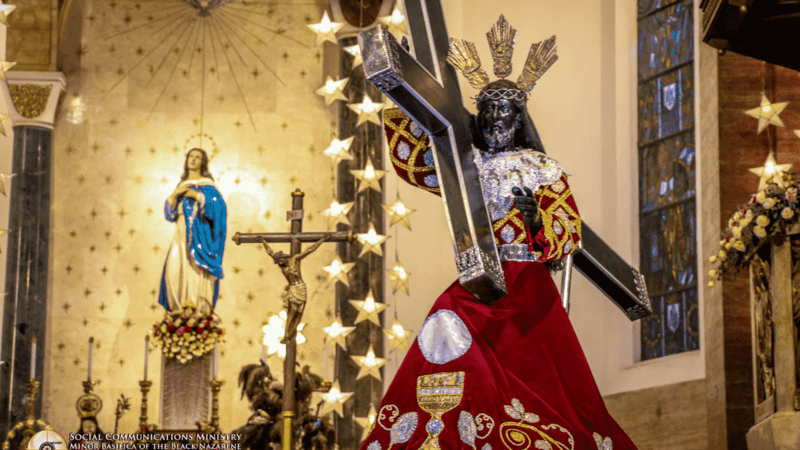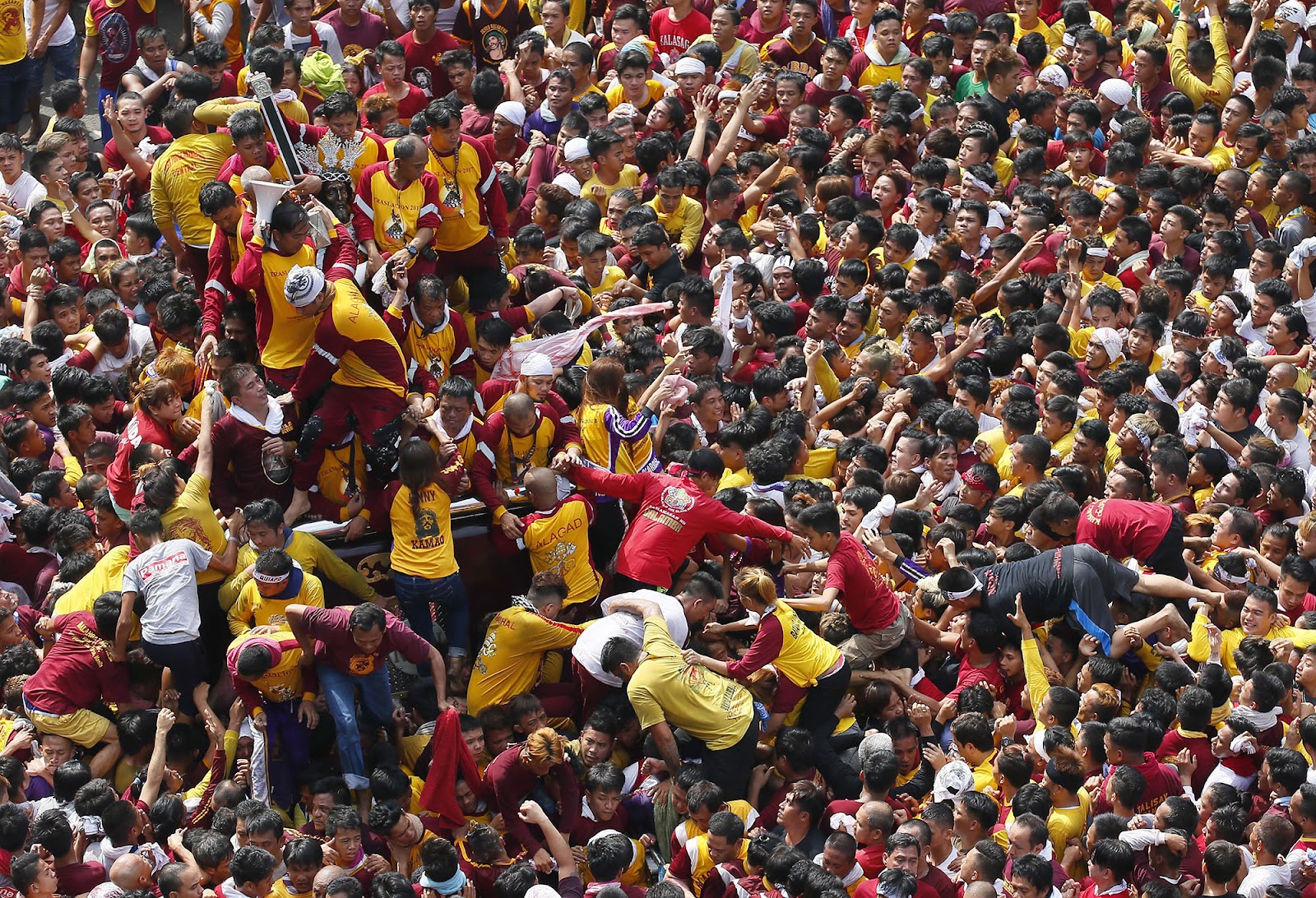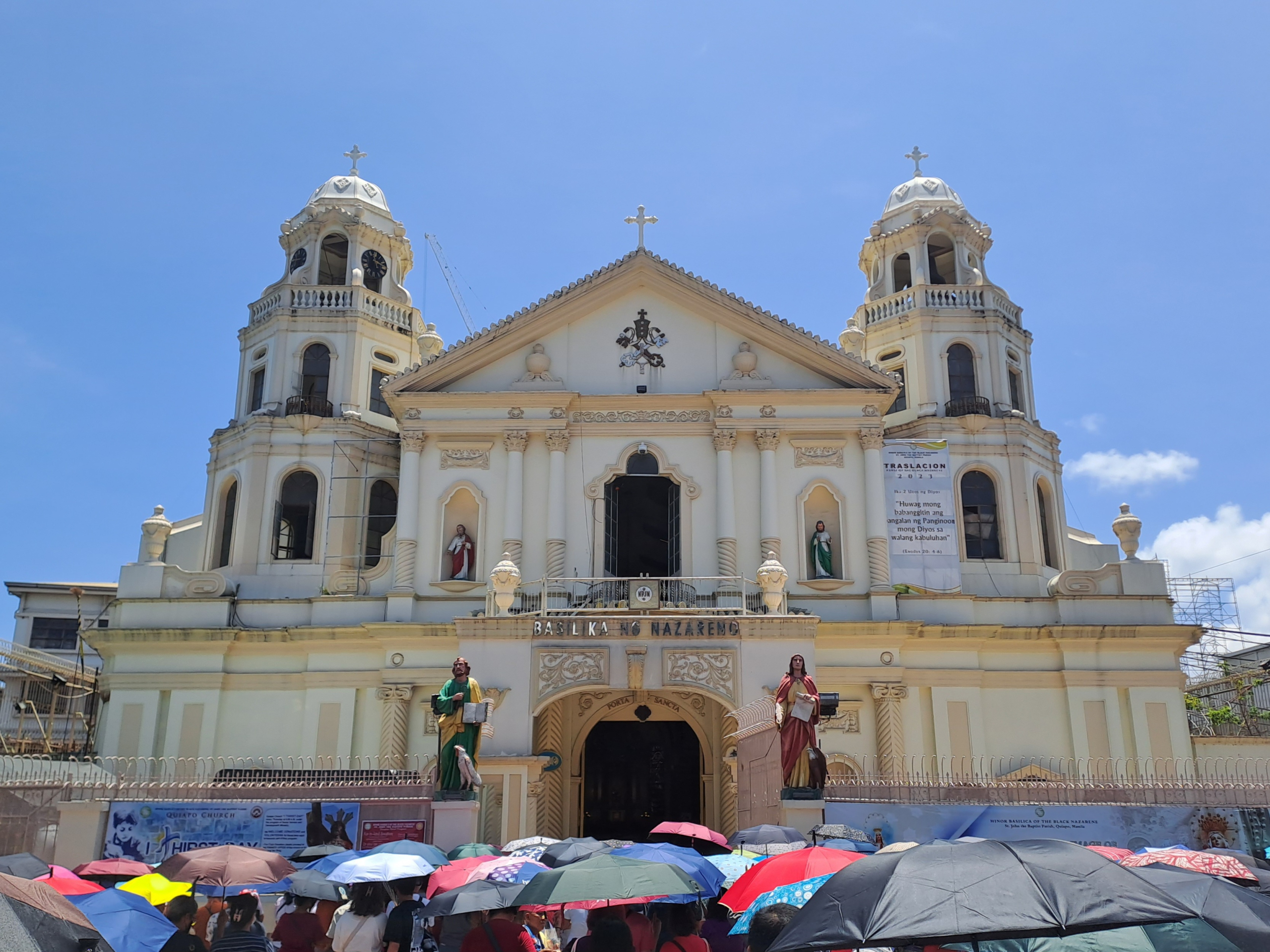The Annual Procession of the Black Nazarene in Manila

The Annual Procession of the Black Nazarene in Manila is a deeply revered religious event on January 9 each year, drawing millions of devotees to the streets surrounding Quiapo Church. The Black Nazarene, a dark-skinned wooden sculpture and original image of Jesus Christ, is enshrined in Quiapo Church and is believed to possess miraculous powers.
The solemn Black Nazarene procession commences from Quiapo Church and winds through the city, culminating at the historic San Sebastian Church. Devotees walk barefoot while fervently participating in this massive religious gathering, often braving large crowds and extreme weather conditions.
Church authorities play a crucial role in orchestrating the feast day, ensuring the safety and order of the procession. The Black Nazarene procession stands as a testament to the unwavering faith of the Filipino people and remains a significant cultural and religious tradition in Manila.
Feast of the Black Nazarene in Manila, Philippines
Traslacion or Pista ng Poong Itim na Nazareno or the Feast of the Black Nazarene in Manila, Philippines, is an annual religious event that draws millions of devotees to the Quiapo Church, officially known as the Minor Basilica of the Black Nazarene.
The centerpiece of this revered celebration is the Black Nazarene, a life-sized, dark-skinned statue of Jesus Christ carrying the cross, believed to embody the suffering of Christ.
The statue is in the Saint John the Baptist Church within the Quiapo district. Devotees, clad in maroon and yellow, participate in a grand procession, pulling and carrying the carriage bearing the Black Nazarene through the crowded streets of Manila. This tradition has deep historical roots, surviving even the devastation of World War II.
The enthusiasm surrounding the Feast of the Black Nazarene has transcended generations, and its significance has been acknowledged by religious figures such as Pope Innocent X in 1650. The event symbolizes faith, endurance, and the unyielding spirit of the Filipino people in their devotion to the Black Nazarene.
Religious Festival in Quiapo: Black Nazarene Procession
Every January 9th in Quiapo, Manila, comes alive with enthusiasm and faith as thousands of devotees gather for the annual Black Nazarene Procession. This religious festival pays homage to the iconic Black Nazarene statue.
This event, dedicated to San Juan Bautista, draws many believers who embark on a pilgrimage to witness and participate in the solemn procession. The parade highlights the Christ-carrying Black Nazarene statue, a revered symbol of deep spirituality and divine connection.
Devotees, fueled by unwavering faith, walk barefoot through the crowded streets, enduring the challenging journey as a testament to their devotion. Most devotees bring their Black Nazarene image or statue to be blessed. The atmosphere is charged with prayer and devotion as the faithful throw towels to wipe the statue, a symbolic gesture of seeking blessings and purification.
The Black Nazarene Procession in Quiapo is a powerful manifestation of religious unity and the enduring spirit of faith that transcends the boundaries of time and space.
Feast of Black Nazarene Activities

The Feast of the Black Nazarene, celebrated annually in Manila, Philippines, is a vibrant display of faith and devotion. Many devotees participate in various activities to honor Nuestro Padre Jesus Nazareno. One of the most remarkable traditions during this religious event is walking barefoot, symbolizing humility and penance.
Traditionally, only men have been allowed to participate in the Traslacion because it was considered that women could not withstand the mix of heat, weariness, and being trampled on by other devotees, which has resulted in injuries and fatalities in the past.
Moreover, numerous devotees passionately join in carrying the revered image of the Black Nazarene through the streets. This solemn event garners extensive coverage from media outlets like GMA News Online, ABS CBN News, Philippine Daily Inquirer, and Manila Bulletin, capturing the emotional moments as devotees throw towels to wipe the image, an act believed to bring blessings and healing.
The Feast of the Black Nazarene is a testament to the enduring spiritual connection between the people and their cherished religious icon.
Sungaw
The Filipino terms ‘sulyap’ (glimpse) and ‘dungaw’ (to view), which means ‘sungaw, ‘ are rituals like prayers observed as the carriage nears the conclusion of Jones Bridge after its processional route. At this point, the image of Nuestra Señora de la Soledad de Manila, whose veneration dates back to before 1884, is brought into an open stage where it encounters the Black Nazarene.
During this ceremony, the veil covering her face is lifted, accompanied by the ethereal strains of a Marian song. This ritual was inaugurated in 2017 and officially designated a prayer station along the processional route in 2019.
Marian rendezvous
Another significant Marian rendezvous includes the ‘Pagtatagpo’ and ‘Visita.’ The ‘Pagtatagpo’ signifies the meeting between Nuestra Señora del Pilar of Santa Cruz, Manila, and the Black Nazarene.
The devotion to Nuestra Señora del Pilar was introduced by the friars of the Society of Jesus in 1743, with an organization dedicated to its veneration established around that time.
In the context of the Traslacion, the ‘Pagtatagpo’ commenced in 2016 and was integrated into the procession in 2019.”
Guide going to Quiapo Church, Manila

Given its cultural and historical significance, finding your way to Quiapo Church in Manila may be an enriching experience. Here’s an overview to help you find Quiapo Church:
From Ninoy Aquino International Airport:
Taxi/Grab:
The most convenient option is to take a taxi or book a Grab ride from the airport. Provide the driver with the address: Quiapo Church, Plaza Miranda, Quiapo, Manila. Ensure the taxi meter is turned on.
Public Transportation:
Take the airport shuttle to the LRT (Light Rail Transit) station. Board the LRT Line 1 (Yellow Line) towards Baclaran. Alight at Carriedo Station. You can take a short walk or a tricycle ride to Quiapo Church from Carriedo Station.
Key Takeaways
The Annual Procession of the Black Nazarene in Manila is a highly regarded religious event every January 9th, attracting millions of devotees to the streets around Quiapo Church.
The Black Nazarene, a dark-skinned wooden figure of Jesus Christ kept at Quiapo Church, is said to be bestowed with miraculous powers.
Traslacion, also known as the Feast of the Black Nazarene, is an annual religious celebration in Manila, Philippines, that gathers millions of devotees to the Quiapo Church, formally known as the Minor Basilica of the Black Nazarene.
The Black Nazarene, a life-sized, dark-skinned figure of Jesus Christ carrying the cross thought to depict the suffering Christ, is the focal point of this cherished event.

Celebrate Life’s Milestones in Camella!
Make unforgettable memories in a Camella home.
Our communities are designed to elevate your living experience.


